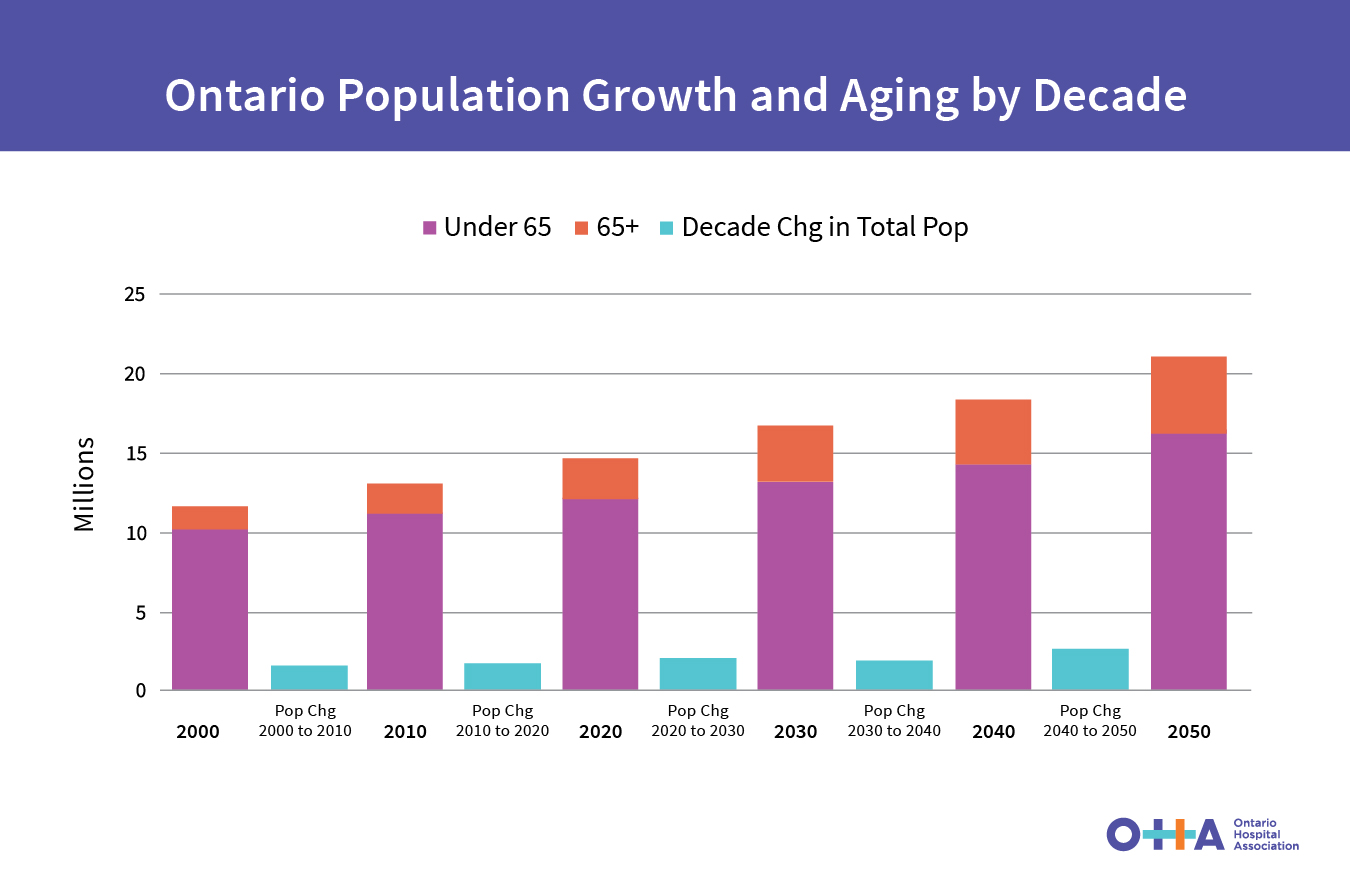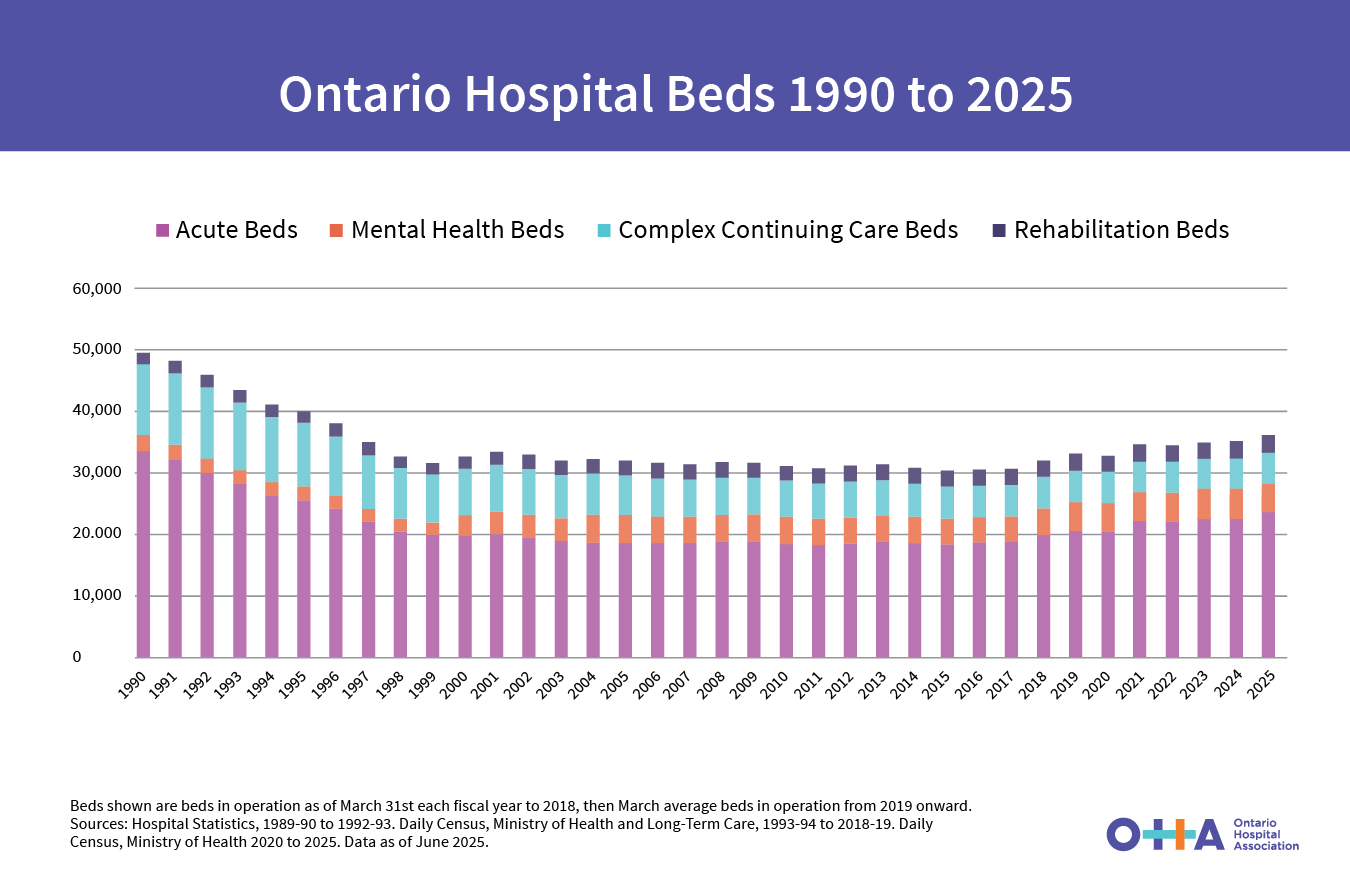About the Ontario Hospital Association
Since 1924, the Ontario Hospital Association (OHA) has served as the voice of the province's 135 public hospitals. The OHA supports its hospital members through advocacy, member engagement and knowledge transfer, labour relations, and data and analytics to help build a better health system.
Ontario’s Hospitals
Ontario is unique. It is the only Canadian province with an independent, voluntary governance model for hospitals which has remained a cornerstone of system stability and hospital oversight. Ontario’s hospitals are governed by skills-based boards — the current best practice in corporate governance — which receive public funding, provide services to the public, and oversee the hospital’s administration and quality of care. Voluntary skills-based boards also ensure that members are representative of the communities they serve.
Ontario’s hospital sector is extremely diverse. When people think of hospitals, they often think of acute care and emergency departments, but there is a wide range of other hospital types across the province. Each plays a distinct role within their communities — some with a broader, regional mandate. Here is a quick breakdown of Ontario’s hospitals:
17 Acute Academic Hospitals
Ontario’s
acute academic hospitals, including two specialty pediatric hospitals, are
affiliated with a medical school and have a significant teaching and research
mandate. They offer a wide range of inpatient and outpatient services and
highly specialized assessments, diagnostics, procedures, and treatments on a
regional and provincial level that may not typically be available in a
community hospital (e.g., PET scans, neurosurgery, and
organ transplants).
46 Large and Medium-sized Community Hospitals
Often
characterized as general hospitals, community hospitals range in size and offer
inpatient, outpatient, community, and outreach services tailored to the needs of
their local communities. Many are affiliated with medical schools and have a
teaching mandate.
11 Complex Continuing Care (CCC) and Rehabilitation (Rehab) Hospitals
These
hospitals are stand-alone facilities offering specialized programs ranging in
complexity and intensity depending on the medical, clinical, and therapeutic
needs of patients. There are also many more hospitals with designated CCC and
Rehab units/programs offering a range of services to people living with either
medically complex conditions or recovering from injury/trauma.
56 Small Hospitals
Typically
located in rural communities, small hospitals are often considered the “focal
point” for the coordination and delivery of a broad range of primary care and
select secondary care services to their communities, such as community lab
services, seniors, housing, assisted living, and mental health and addictions
services.
5 Mental Health and Addiction Hospitals
These
hospitals are stand-alone facilities designated under the Public Hospital Act
and differ from other hospitals designated as mental health facilities under
the Mental Health Act as they serve as regional and provincial resources for
people across the province.
Challenges and Opportunities
Ontario’s health system continues to face serious challenges including complex financial pressures, high inflation, and a rapidly growing and aging population that contributes to more complex care needs and increased demand for services. In the face of these challenges, hospitals work hard every day to deliver exceptional care and meet the rising demands of their communities.
Ontario’s hospitals are continuously adapting and have long led other jurisdictions with an exceptional record of efficiency and working towards continuous improvement efforts. To accommodate the growing and aging population, hospitals have continued to make improvements in efficiency which have led to Ontario having the second lowest hospitalization rate, the lowest average length of stay in acute care hospitals, and the lowest cost of an inpatient stay, among all the provinces.
By working to shorten stays, reduce the need for hospitalizations, and maximize the scope of practice of regulated health professionals, hospitals are finding ways to reinvent and provide care even more effectively.
Looking Ahead
Ontario has great potential to revolutionize how we deliver care to our communities, driven by technological innovations and hospital-based research. Hospital-based health research is a powerful driver of solutions that address national priorities to accelerate the discovery of life-saving treatments, advance prevention and wellness strategies that keep people from getting sick and reduce the long-term burden on our health system and economy.
Ongoing collaboration with government and system partners to advance and modernize hospitals and the broader health ecosystem is crucial to meeting Ontario’s increasing demographic demands and continuing to deliver quality care in a highly efficient manner.



This information is based on the most recently available data.
Supporting Our Hospitals: Networks and Committees
To ensure the unique needs of each hospital type are met, the OHA convenes members from across the province through its networks and committees to represent the context, perspectives, and issues of our diverse membership.
Building on learnings from the COVID-19 pandemic, the OHA introduced a network model for member engagement that is focused on high-value engagement. These networks are intended to keep members well-informed, encourage active participation in generative discussions and balance a two-way flow of information. Both networks and committees provide members with a forum to connect with one another, while also offering the OHA guidance on issues within their area of focus.
Learn more about our active networks and committees:
